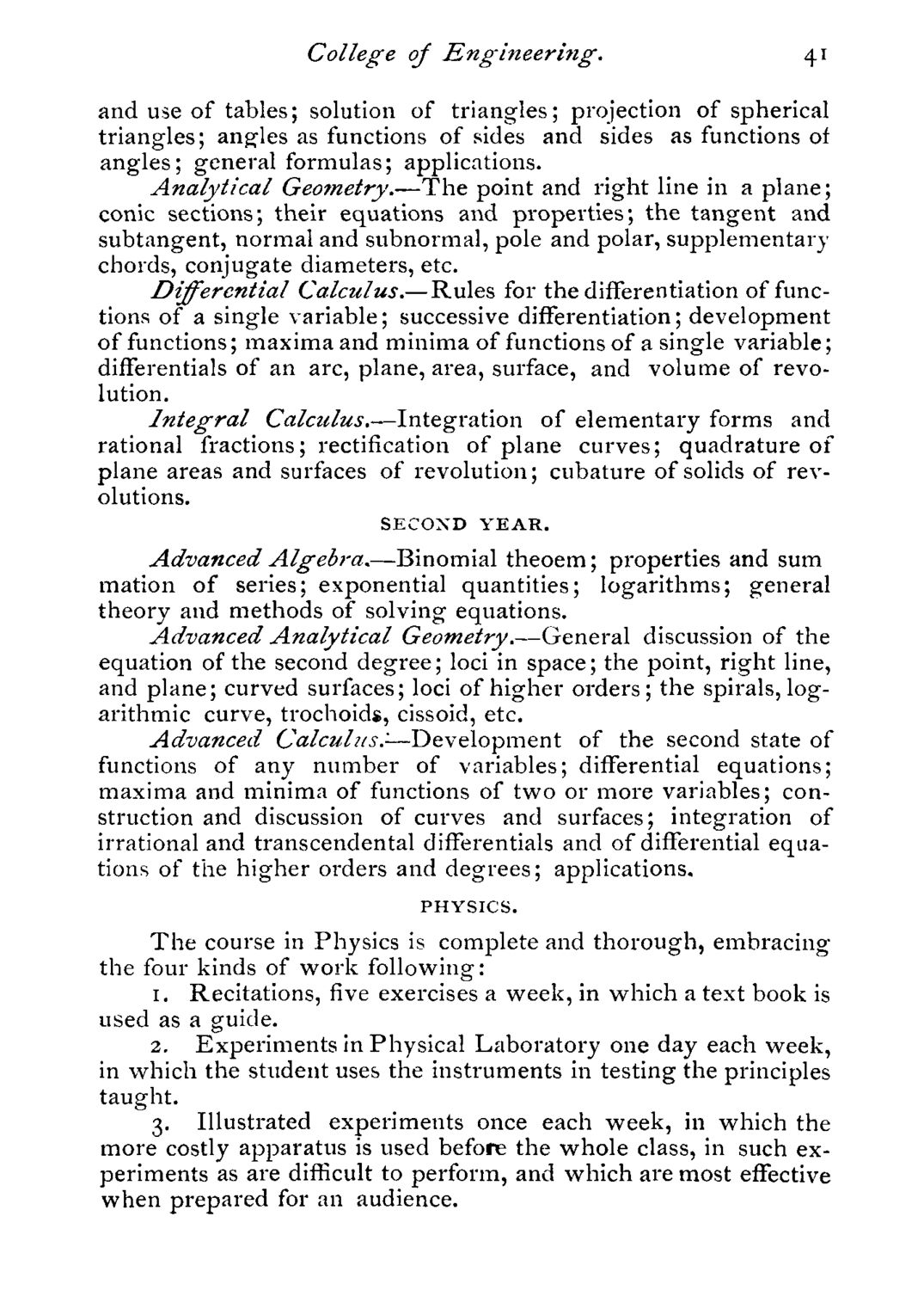| |
| |
Caption: Course Catalog - 1880-1881
This is a reduced-resolution page image for fast online browsing.

EXTRACTED TEXT FROM PAGE:
College of Engineering. 41 and use of tables; solution of triangles; projection of spherical triangles; angles as functions of sides and sides as functions of angles; general formulas; applications. Analytical Geometry.—The point and right line in a plane; conic sections; their equations and properties; the tangent and subtangent, normal and subnormal, pole and polar, supplementary chords, conjugate diameters, etc. Differential Calculus.— Rules for the differentiation of functions of a single variable; successive differentiation; development of functions; maxima and minima of functions of a single variable; differentials of an arc, plane, area, surface, and volume of revolution. Integral Calculus.—Integration of elementary forms and rational fractions; rectification of plane curves; quadrature of plane areas and surfaces of revolution; cubature of solids of revolutions. SECOXD YEAR. Advanced Algebra.—Binomial theoem; properties and sum mation of series; exponential quantities; logarithms; general theory and methods of solving equations. Advanced Analytical Geometry.—General discussion of the equation of the second degree; loci in space; the point, right line, and plane; curved surfaces; loci of higher orders; the spirals, logarithmic curve, trochoids, cissoid, etc. Advanced Calculus.'-—Development of the second state of functions of any number of variables; differential equations; maxima and minima of functions of two or more variables; construction and discussion of curves and surfaces; integration of irrational and transcendental differentials and of differential equations of the higher orders and degrees; applications. PHYSICS. The course in Physics is complete and thorough, embracing the four kinds of work following: 1. Recitations, five exercises a week, in which a text book is used as a guide. 2. Experiments in Physical Laboratory one day each week, in which the student uses the instruments in testing the principles taught. 3. Illustrated experiments once each week, in which the more costly apparatus is used before the whole class, in such experiments as are difficult to perform, and which are most effective when prepared for an audience.
| |